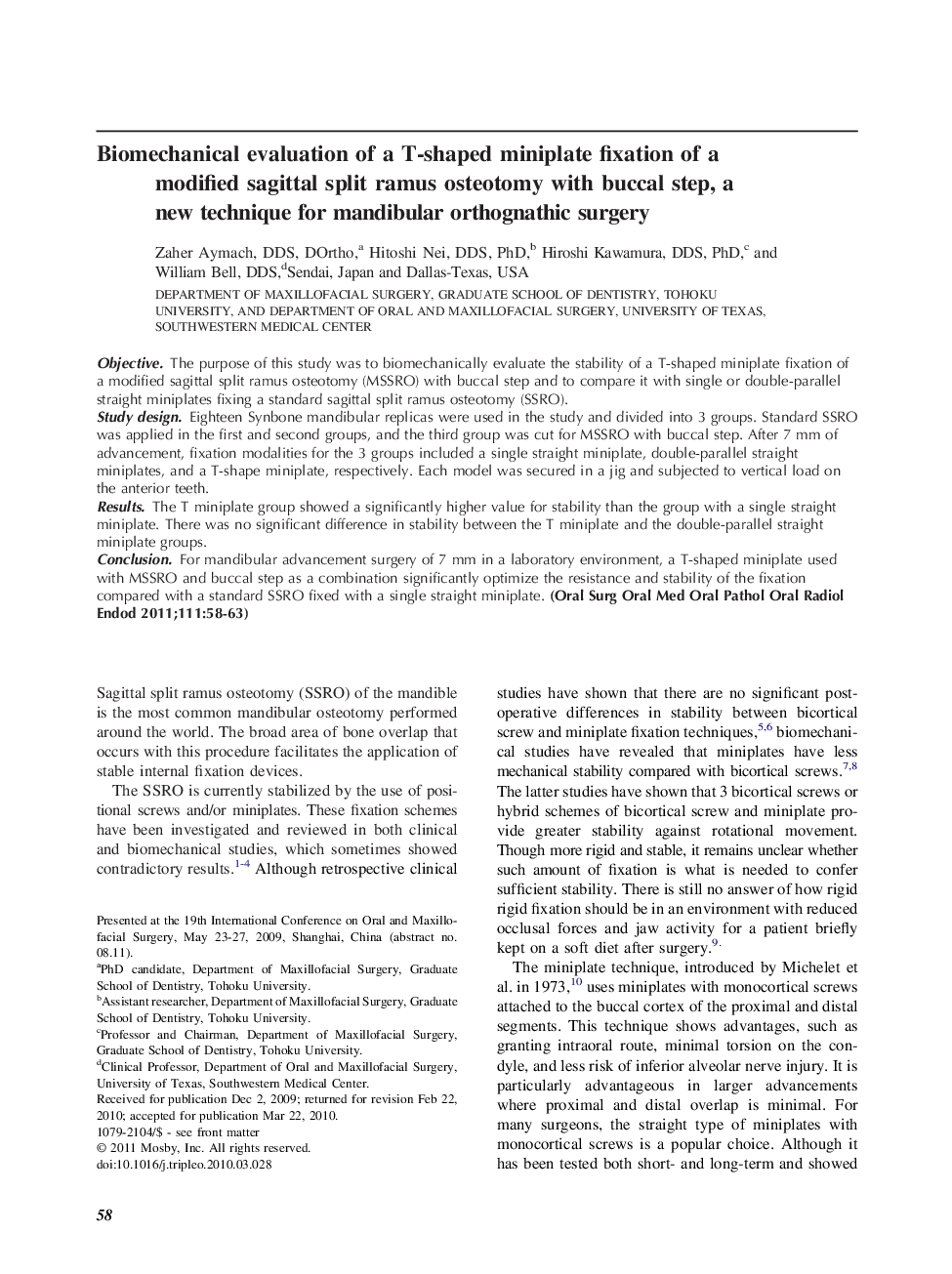| Article ID | Journal | Published Year | Pages | File Type |
|---|---|---|---|---|
| 3167109 | Oral Surgery, Oral Medicine, Oral Pathology, Oral Radiology, and Endodontology | 2011 | 6 Pages |
ObjectiveThe purpose of this study was to biomechanically evaluate the stability of a T-shaped miniplate fixation of a modified sagittal split ramus osteotomy (MSSRO) with buccal step and to compare it with single or double-parallel straight miniplates fixing a standard sagittal split ramus osteotomy (SSRO).Study designEighteen Synbone mandibular replicas were used in the study and divided into 3 groups. Standard SSRO was applied in the first and second groups, and the third group was cut for MSSRO with buccal step. After 7 mm of advancement, fixation modalities for the 3 groups included a single straight miniplate, double-parallel straight miniplates, and a T-shape miniplate, respectively. Each model was secured in a jig and subjected to vertical load on the anterior teeth.ResultsThe T miniplate group showed a significantly higher value for stability than the group with a single straight miniplate. There was no significant difference in stability between the T miniplate and the double-parallel straight miniplate groups.ConclusionFor mandibular advancement surgery of 7 mm in a laboratory environment, a T-shaped miniplate used with MSSRO and buccal step as a combination significantly optimize the resistance and stability of the fixation compared with a standard SSRO fixed with a single straight miniplate.
